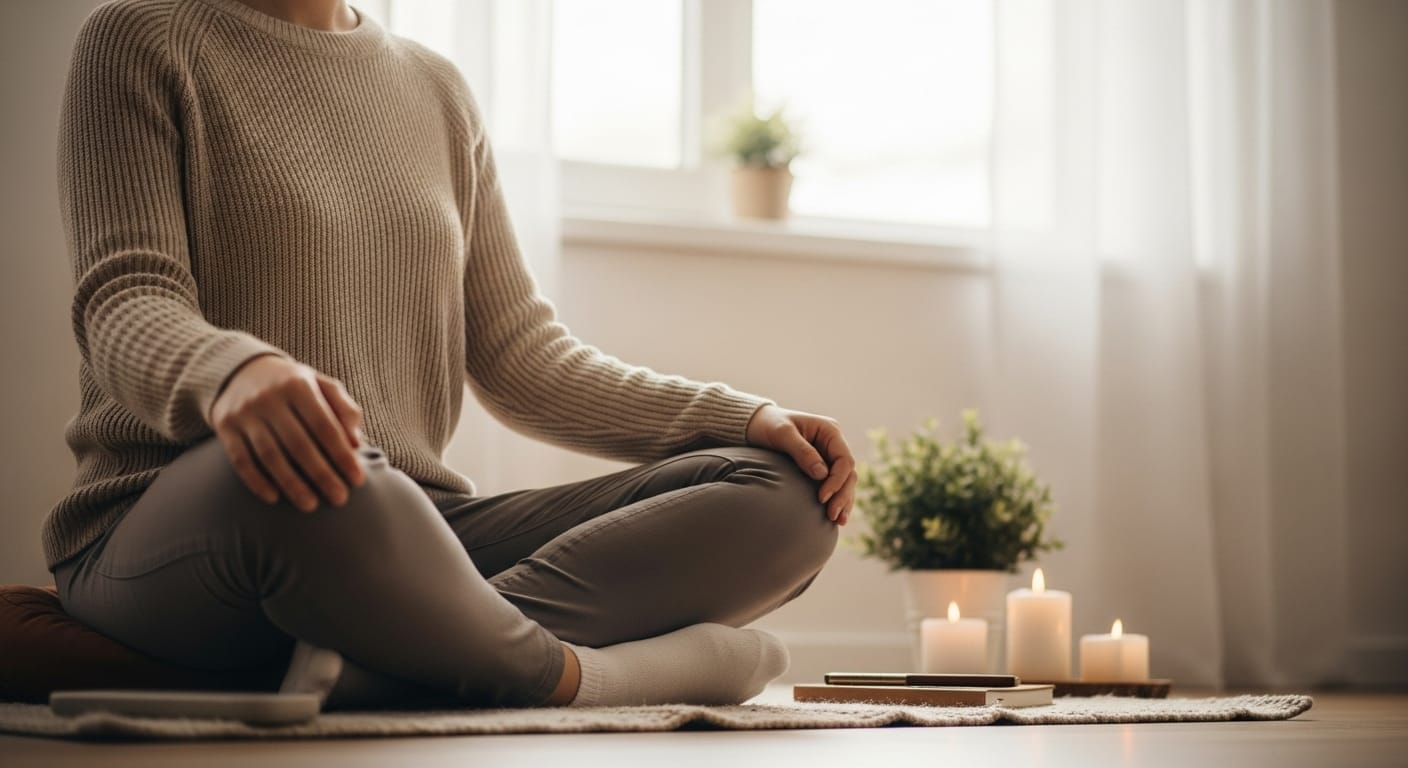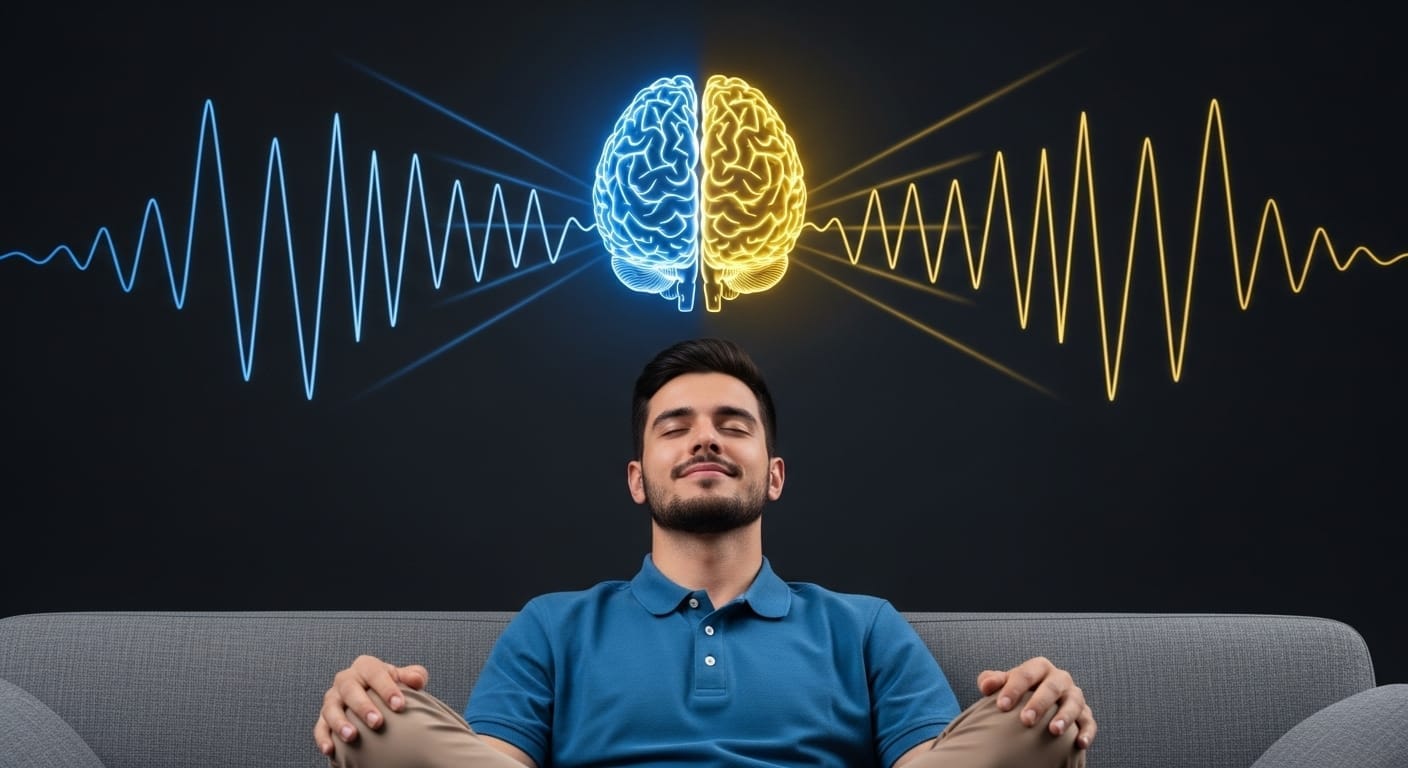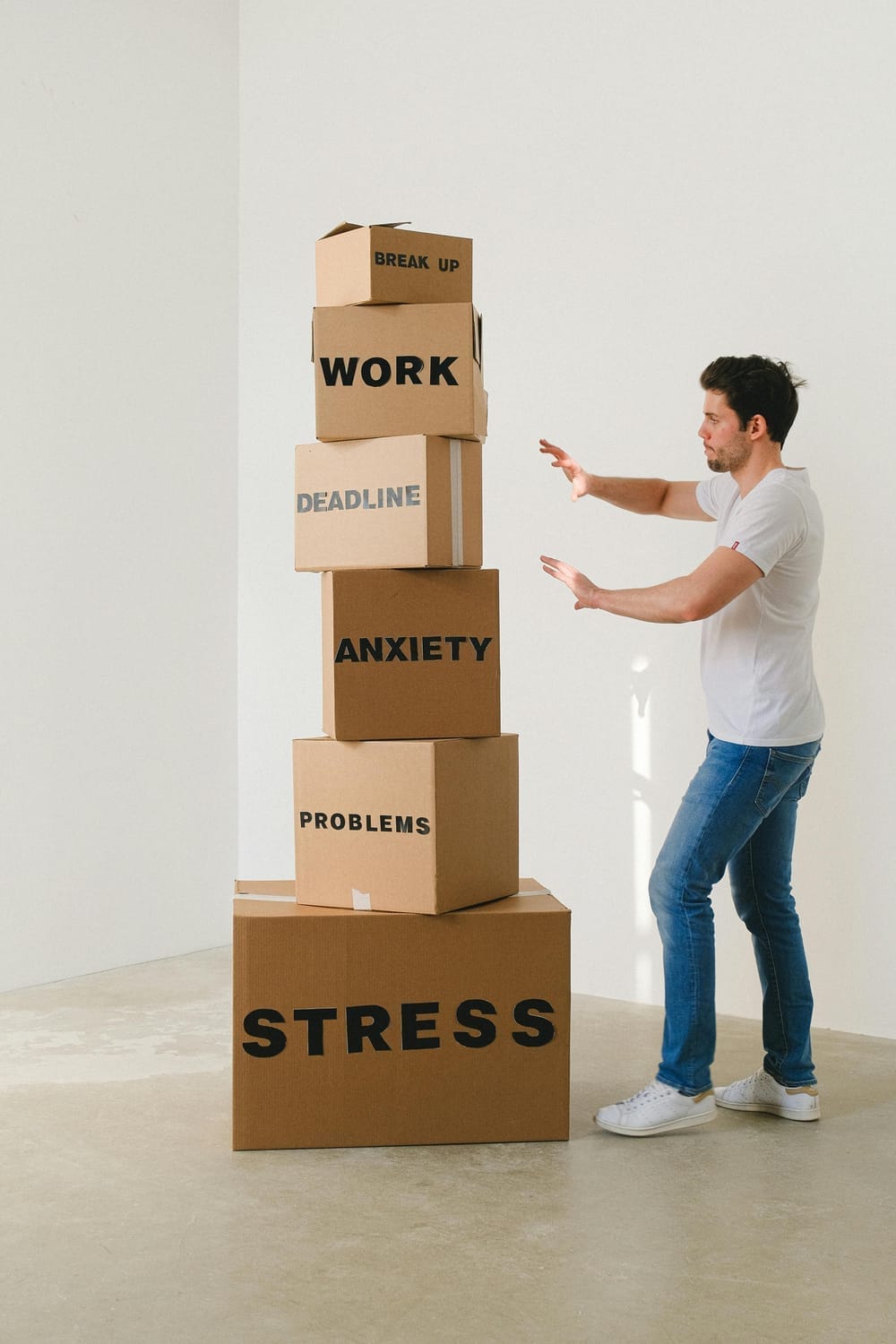

Mindful
Meditation
Unlocked
"Quiet the Mind. Unlock the
Present. Discover Mindfulness
That Transforms."
Mindfulness 101: Understanding the Basics
You've probably heard the term mindfulness in many places. It's talked about in wellness retreats and at work to manage stress. But what does it really mean to be mindful?
Mindfulness is about being aware of the present moment. It means paying attention to your thoughts, feelings, and body sensations without judging them. This practice helps you understand yourself and your experiences better.
Being mindful can help you deal with life's tough moments. It improves your mental focus and boosts your overall health. As you learn more about mindfulness, you'll see its many benefits. You'll also find out how to use it in different parts of your life.
Key Takeaways
Understanding the concept of mindfulness and its significance.
Learning how mindfulness can improve mental clarity and well-being.
Discovering ways to apply mindfulness in daily life.
Recognizing the benefits of mindfulness in navigating life's challenges.
Exploring the role of awareness in mindfulness practice.
What Is Mindfulness: Definition and Core Concepts

Mindfulness is about being in the moment. It means watching your thoughts and feelings without judgment. This practice helps you stay aware of what's happening now, without thinking about the past or future.
The Historical Roots of Mindfulness
Mindfulness comes from ancient spiritual traditions. Knowing its history can make you appreciate it more.
Buddhist Origins of Mindfulness Practice
Mindfulness started with Buddhist meditation, like Vipassana or insight meditation. It was used to understand reality better.
Western Adaptation of Mindfulness
When Buddhism came to the West, mindfulness changed. It focused more on its health benefits, not its religious side.
Mindfulness vs. Meditation: Understanding the Difference
Mindfulness and meditation are related but different. Meditation is a wide term for practices that calm the mind. Mindfulness is a specific meditation that focuses on being present.
| Aspect | Mindfulness | Meditation |
|---|---|---|
| Focus | Being present in the moment | Achieving a mentally clear state |
| Practice | Can be practiced during any activity | Typically practiced in a dedicated session |
| Goal | Cultivate awareness and acceptance | Achieve mental clarity and calm |
The Science Behind Mindfulness
Understanding mindfulness is key to seeing how it can change our health. As you learn more, you'll find lots of research backing its benefits.
Neurological Effects of Mindfulness Practice
Mindfulness changes the brain in big ways, improving our well-being. It makes our brain more flexible, a concept called neuroplasticity.
Brain Changes Associated with Regular Practice
Studies show mindfulness practice changes the brain. It affects areas like attention, emotions, and memory. For example, the hippocampus, important for learning, grows in those who practice regularly.
The amygdala, linked to stress, shrinks. This could mean less stress for us.
Research-Backed Evidence on Mindfulness
More and more research supports mindfulness meditation. It helps with stress, emotions, and thinking. Studies look at its effects on both mind and body.
Key Studies and Their Findings
Many studies show mindfulness's benefits. For instance, MBSR programs cut anxiety and depression symptoms. It also boosts attention and thinking skills.
By grasping the science of mindfulness, you'll see its benefits more clearly. It's a powerful way to improve your health and happiness.
Key Benefits of Mindfulness Practice
Mindfulness is a powerful tool for better mental, emotional, and physical health. Adding mindfulness to your daily routine can bring many benefits. These can make your life better overall.
Mental Health Benefits
Mindfulness helps your mental health by lowering stress and anxiety. It also helps manage depression and improve emotional control.
Stress and Anxiety Reduction
Mindfulness teaches you to stay in the present moment. It helps you let go of worries about the past or future. This can greatly reduce stress and bring calm.
Depression Management
Mindfulness is good for managing depression. It helps you be more aware of your thoughts and feelings. This can lead to a healthier relationship with your experiences and fewer depressive episodes.
Physical Health Improvements
Mindfulness also improves physical health. It can lower blood pressure, improve heart health, and boost the immune system.
Impact on Blood Pressure and Heart Health
Studies show mindfulness can lower blood pressure and reduce heart disease risk. This is because mindfulness reduces stress and anxiety.
Effects on Immune Function
Mindfulness also boosts immune function. It reduces stress and promotes relaxation. This makes your immune system stronger, helping you fight off illnesses.
Enhanced Cognitive Function and Focus
Mindfulness improves focus and mental clarity. It trains your mind to stay present and aware. This leads to better performance in work and daily life.
| Benefit | Description | Impact |
|---|---|---|
| Mental Health | Reduces stress and anxiety, manages depression | Improved emotional regulation and well-being |
| Physical Health | Lowers blood pressure, improves heart health, boosts immune function | Reduced risk of chronic diseases |
| Cognitive Function | Enhances focus, concentration, and mental clarity | Better performance in work and daily activities |
Understanding mindfulness benefits can help you start practicing it daily. This can lead to better mental, physical, and emotional health.
The Importance of Mindfulness in Today's Fast-Paced World

Mindfulness is more than just a practice; it's a must in today's fast world. As we deal with life's complexities, mindfulness becomes more important.
Mindfulness as an Antidote to Digital Overwhelm
The digital age has many benefits but also brings digital overwhelm. Mindfulness is a strong antidote. It helps you handle the constant info and notifications, reducing stress and boosting well-being.
Creating Balance in a Busy Life
Mindfulness helps create balance in a busy life. It lets you focus better, avoid burnout, and manage tasks well.
Mindful Approaches to Work-Life Balance
To get a better work-life balance, try mindful daily habits. Set clear work and personal life boundaries. Practice mindfulness during your commute or be present in your daily tasks.
| Mindful Approach | Benefit |
|---|---|
| Setting clear boundaries | Reduces work-related stress |
| Mindfulness during commute | Enhances mental clarity |
| Being present in daily activities | Improves overall well-being |
Core Mindfulness Techniques for Beginners
Starting with mindfulness means learning the basics. Mindfulness has many ways to help you stay aware and present. By practicing these key techniques, you can improve your mindfulness journey.
Mindful Breathing Exercises
Mindful breathing is a key technique. It focuses on your breath to keep you in the present. Beginners can try the 4-7-8 Breathing Technique and the Box Breathing Method.
4-7-8 Breathing Technique
The 4-7-8 Breathing Technique, or "Relaxation Breath," is simple. Breathe in through your nose for 4 counts, hold for 7 counts, and breathe out through your mouth for 8 counts. It calms your nervous system and helps you relax.
Box Breathing Method
The Box Breathing Method is easy to follow. Breathe in for 4 counts, hold for 4 counts, breathe out for 4 counts, and hold again for 4 counts. It helps you stay balanced and focused.
Body Scan Meditation
Body Scan Meditation is a powerful technique. Lie down or sit comfortably and focus on each part of your body, starting from your toes and moving up. It helps release tension and relaxes you.
Mindful Observation Practice
Mindful Observation is about observing an object, like a flower or leaf, with all your senses. Notice its color, texture, smell, and more. It helps you stay present and fully engaged with your surroundings.
Incorporating Mindfulness Into Your Daily Routine

Mindfulness is more than a practice; it's a lifestyle. It can be woven into your daily activities. This can lead to less stress and better overall health.
Morning Mindfulness Rituals
Starting your day with mindfulness can make it better. Simple acts like mindful breathing or a quick meditation session work well. Just a few minutes each morning can make a big difference.
Mindful Eating Practices
Mindful eating means focusing on your food. Notice the colors, smells, and textures. Also, pay attention to hunger and fullness. This way, you enjoy your meals more and digest better.
Mindfulness During Commute and Work
Use your commute to practice mindfulness. Notice your surroundings and your body's sensations. At work, short mindfulness breaks can cut stress and boost focus.
Micro-Mindfulness Moments
Micro-mindfulness moments fit into a busy day. They include deep breathing, feeling your feet on the ground, or just being present. These moments are easy to add to your day.
Mindful Transitions Between Tasks
Being mindful when switching tasks helps you stay focused. Take a pause, breathe, and set your intentions before moving on. This keeps you grounded and boosts productivity.
Mindfulness Meditation: A Step-by-Step Guide
Mindfulness meditation is a powerful tool for awareness and calm. It's simple yet effective for reducing stress and improving well-being.
Creating the Right Environment
To start, create a quiet, comfortable spot for meditation. Use a cushion or chair for support and keep the room cozy. Turn off distractions like phones or play calming music.
Posture and Positioning
Good posture is key for meditation. Sit comfortably, with your back straight. Place your hands on your lap and slightly tilt your chin. Stay alert and comfortable.
Guided vs. Unguided Meditation
Beginners might like guided meditations. They're led by an instructor who guides you. Guided meditations help you stay focused. But, you can move to unguided meditations as you get more comfortable.
Recommended Apps and Resources
Many apps and resources can help with mindfulness meditation. Some top picks include:
Headspace: Offers personalized plans and guided sessions.
Calm: Provides guided meditations, sleep stories, and music.
Insight Timer: Has a huge library of free meditations and a timer.
As
, adding mindfulness meditation to your day can change your life for the better.
Common Challenges in Mindfulness Practice and How to Overcome Them
Starting your mindfulness journey can bring up challenges. Mindfulness is great, but it has its hurdles. Knowing these challenges helps you get past them and keep practicing.
Dealing with Wandering Thoughts
Wandering thoughts are a big challenge in mindfulness. Your mind might wander, making it hard to stay present. To deal with this, acknowledge the thought and refocus on your breath or the now. With regular practice, you'll get better at staying focused.
Finding Time for Practice
Finding time for mindfulness can be tough. Busy lives make it easy to forget about mindfulness. Start with short exercises, like mindful breathing during your commute or before a meeting.
Maintaining Consistency
Staying consistent in mindfulness is important. To do this, set a regular practice time.
Creating a Sustainable Practice Schedule
Start with small goals, like a few minutes of mindfulness each day. As you get more comfortable, increase the time. Remember, a short daily practice is better than a long one that's rare.
Conclusion: Your Journey to Mindful Living
You now know what mindfulness is and its benefits. It's a journey to a more balanced and fulfilling life. Mindfulness is not just a practice; it's a way of living that brings awareness, clarity, and compassion.
By adding mindfulness to your daily life, you'll see many benefits. These include better mental and physical health and improved thinking skills. Start with simple steps like mindful breathing or body scan meditation. Then, slowly add mindfulness to your daily activities.
As you start this journey, you'll find mindfulness helps with life's challenges. It makes you more present and aware. This helps you deal with stress, anxiety, and uncertainty. So, take the first step today and become a more mindful person.
FAQ
What is mindfulness?
Mindfulness is about being fully present and aware in the moment. It involves noticing your thoughts, feelings, and body without judgment.
What are the benefits of mindfulness practice?
Mindfulness can lower stress and anxiety. It also improves mental health and cognitive function. Plus, it boosts overall well-being.
How do I start practicing mindfulness?
Start with simple techniques like mindful breathing and body scan meditation. You can also observe your surroundings mindfully.
What is the difference between mindfulness and meditation?
Mindfulness is about being present and aware. Meditation is a way to practice mindfulness. They're not the same, but related.
How can I incorporate mindfulness into my daily routine?
Practice mindfulness during everyday activities like eating and commuting. Also, set aside time each day for mindfulness.
What are some common challenges in mindfulness practice, and how can I overcome them?
Challenges include dealing with wandering thoughts and finding time. Be patient and create a schedule. Use guided resources to help.
Can mindfulness be practiced by anyone?
Yes, anyone can practice mindfulness. It's for all ages and backgrounds. It's flexible and can be tailored to your needs.
How long does it take to see the benefits of mindfulness practice?
You might see benefits quickly, even after a few sessions. But regular practice is key for the best results.
Stay Mindful
Get updates & free mental wellness tips.
Hi 👋
Hope you are doing okay, Just want to let you know,
Some links on this site are affiliate links. We may earn a small commission if you make a purchase — at no extra cost to you.
Understand Your Mind.
Try our quick quizzes to learn more about your mental health.
Check these out









